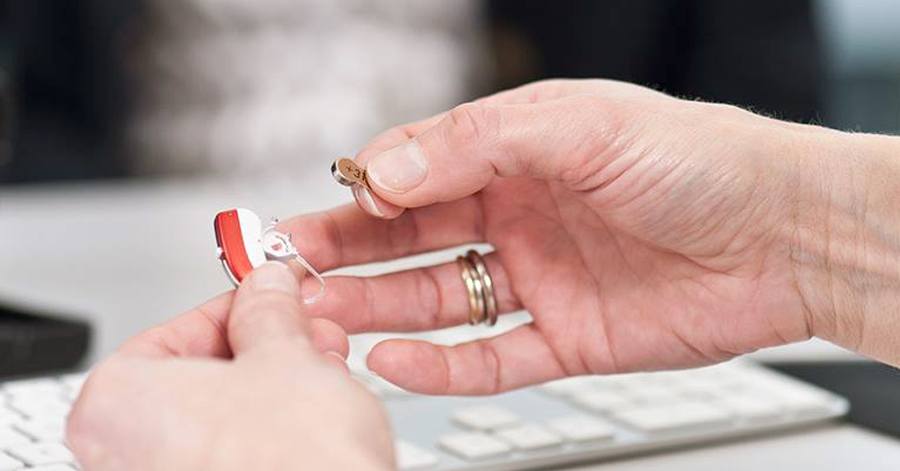As a hearing aid wearer, it’s important for you to know how to change a hearing aid battery. Although hearing aid batteries have gotten stronger over the years, even rechargeable batteries will need to be changed. The following information explains how to change a hearing aid battery as well as other key maintenance tips to ensure you experience the highest level of service.
How Will I Know When the Battery Needs to Be Changed?
Most hearing aid batteries that are not rechargeable will keep the device powered for anywhere between three and 22 days before it must be replaced. This number can vary depending on:
- Your type of hearing aid
- The type of battery
- The battery’s capacity
- How often you use your hearing aids
When your batteries near the time to be replaced, you may hear a few beeps. These pre-warning beeps may continue at brief intervals until the battery completely runs out. You may also hear four beeps, which is the final warning before the device turns off. These four beeps may occur shortly after the pre-warning or within the next few hours.
How to Change a Hearing Aid Battery?
The steps involved in changing your hearing aid battery are simple. Get started by:
- Completely open the drawer containing the battery and remove it.
- Remove the label located on the positive (+) side of your new battery.
- Place the new battery inside of the battery drawer. It’s important the + side is facing up.
- Close the battery drawer. Your device may play a jingle or a tone through the earpiece to indicate the new battery has been installed.
Before you insert the new battery, make sure to inspect it for any moisture. If you notice any moisture, you should wipe it off before placing the new battery. After changing the battery, it may take a few seconds before the new battery begins to work.
You can also use a MultiTool to change the battery in your device. The MultiTool has a magnetic end that allows you to easily remove and insert batteries. Make sure to ask your North Shore Hearing professional about the MultiTool.
How Do You Know If Your Battery Needs to be Replaced?
In the event your hearing aids turn off, you should first check and test the battery: with or without a tester.
Without a Battery Tester
If you do not have a battery tester, place the battery in question inside of the hearing aid and close the door. With your hands clasped around your hearing aid, hold it next to your ear. If you hear a squealing noise, then your battery is functioning fine.
With a Battery Tester
If you do have a battery tester, simply put the battery in question on the surface of the tester. Make sure the positive end of the battery faces upwards. Then move the battery in the direction of the arrow and read the results on the display.
Avoid Hearing Aid Damage
Hearing aid batteries can damage your device if they’re left in for an extended period of time. The moisture can become trapped between the batteries and cause damaging corrosion. As a result, it’s a good practice to:
- Leave the battery door open when your device isn’t in use
- Completely remove the batteries if you aren’t going to use your device for a few days
- Take the opportunity to clean your battery contacts when you change your batteries
You can clean your contacts gently wiping them down with a dry cotton swab. Dirty battery contacts can create a poor connection, which leads to under performing hearing aids.
Store Your Hearing Aids in a Dry Place
Hearing aid technology and circuitry has become very advanced. Because of this, a little bit of moisture can cause serious damage. Even though many hearing aids are engineered to be water resistant, you should always take them out when swimming or showering.
If your hearing aids do come in contact with water, dry them immediately with a cloth or towel. Avoid attempting to dry your devices with a hair dryer because the high levels of heat can cause damage. If you live in a humid area, you may want to consider storing your hearing aids in a specially designed hearing aid dehumidifier.
Contact North Shore Hearing P.C. Today
As your local hearing experts, we offer several years of experience helping our customers hear the world more clearly. Whether you want to learn how to change a hearing aid battery or schedule your annual hearing test, North Shore Hearing P.C. is your one-stop hearing solution.
Contact North Shore Hearing P.C. today.


